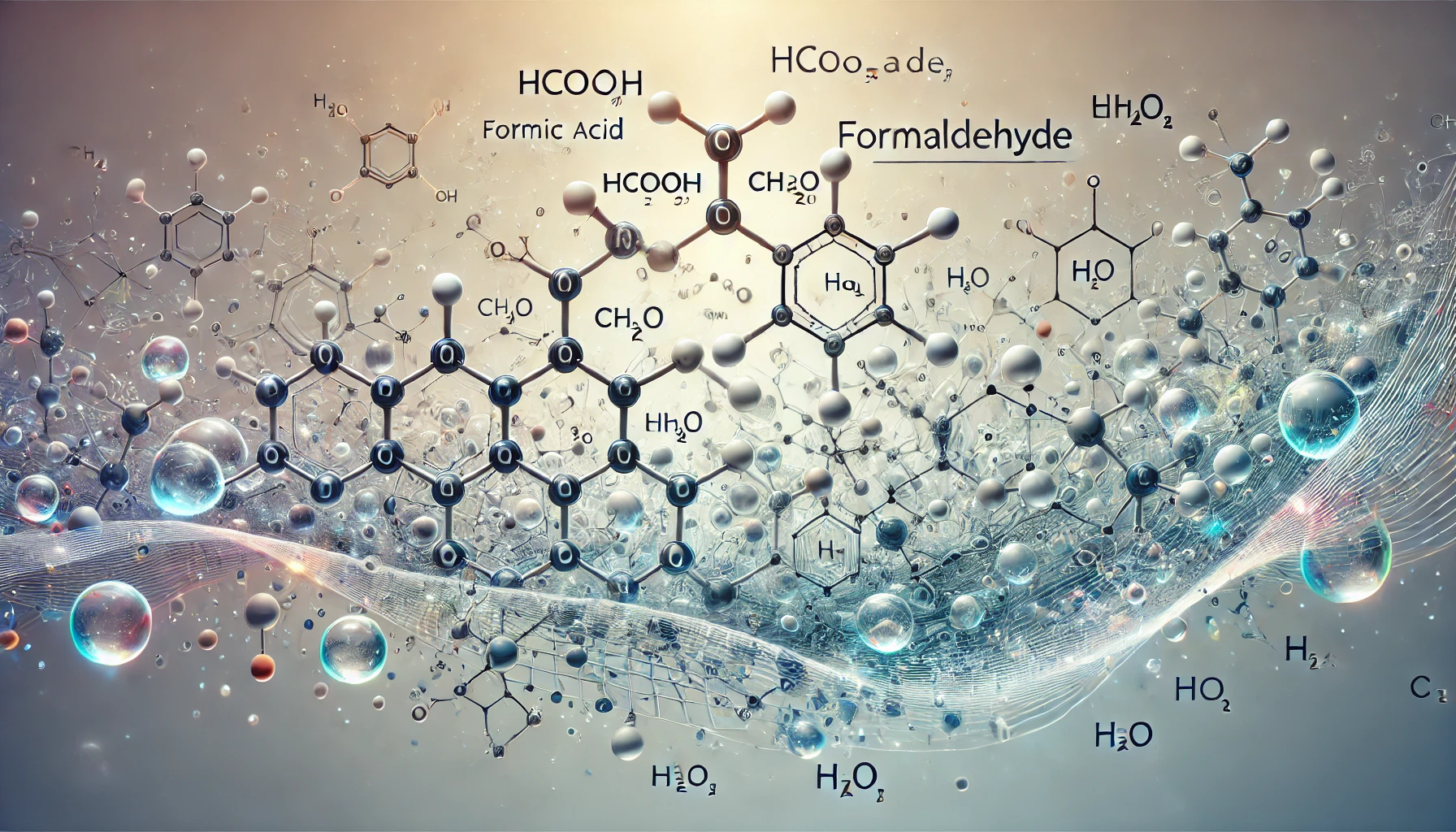Introduction
Chemistry unveils the mysteries of molecules and their interactions, helping us understand the world at a fundamental level. Among the essential compounds studied in various scientific and industrial applications, HCOOH (formic acid), CH2O (formaldehyde), and H2O (water) hold a prominent place. These molecules are not only chemically intriguing but also pivotal in numerous practical applications ranging from organic synthesis to environmental science.
In this article, we’ll explore the properties, behaviors, and interactions of HCOOH CH2O H2O shedding light on their unique significance and practical uses.
Properties of HCOOH CH2O H2O
Each of these compounds—HCOOH (formic acid), CH2O (formaldehyde), and H2O (water)—has distinctive properties that contribute to their wide-ranging roles in chemistry.
HCOOH (Formic Acid)
- Molecular Formula: HCOOH
- Molecular Weight: 46.03 g/mol
- Key Characteristics:
- Simplest carboxylic acid with a strong, pungent odor.
- Highly polar, making it soluble in water and many organic solvents.
- Reacts readily with bases and alcohols to form salts and esters.
- Applications:
- Used in agriculture as a preservative for silage.
- Plays a critical role in leather processing and chemical synthesis.
CH2O (Formaldehyde)
- Molecular Formula: CH2O
- Molecular Weight: 30.03 g/mol
- Key Characteristics:
- Simplest aldehyde, existing as a gas at room temperature.
- Soluble in water, forming a solution called formalin.
- Highly reactive due to its carbonyl group.
- Applications:
- Essential in the production of resins and plastics.
- Acts as a disinfectant and preservative.
H2O (Water)
- Molecular Formula: H2O
- Molecular Weight: 18.02 g/mol
- Key Characteristics:
- Universal solvent due to its polarity and ability to form hydrogen bonds.
- Exists in three states—solid, liquid, and gas—under natural conditions.
- Applications:
- Medium for most biological and chemical reactions.
- Crucial in environmental processes and industrial systems.
Interactions Between HCOOH CH2O H2O
When HCOOH CH2O H2O interact, they form the basis for numerous chemical processes, showcasing fascinating behaviors:
1. Solubility and Polarity
- Both HCOOH and CH2O are highly soluble in H2O due to their polar nature.
- The hydrogen bonding in water facilitates the dissolution of these compounds, enhancing their reactivity in aqueous environments.
2. Hydrogen Bonding
- Formic acid interacts with water via hydrogen bonds, which stabilizes its ionized form (HCOO⁻ and H⁺).
- Formaldehyde forms a hydrated species, methanediol (CH2(OH)2), in water, showcasing the role of water as a reaction medium.
3. Acid-Base Reactions
- HCOOH acts as a weak acid in water, donating protons to form hydronium ions (H3O⁺).
- This interaction is pivotal in neutralization reactions and catalysis.
4. Polymerization
- In the presence of water, CH2O undergoes polymerization, forming paraformaldehyde or other polymeric structures.
- HCOOH can influence this process by providing acidic conditions to control the reaction.
Industrial and Environmental Relevance of HCOOH CH2O H2O
1. Organic Synthesis
- The combination of HCOOH CH2O H2O serves as a foundation for creating more complex organic molecules.
- These compounds are precursors in the production of polymers, resins, and pharmaceuticals.
2. Green Chemistry
- HCOOH is studied as a potential hydrogen carrier for renewable energy applications, with water acting as a reaction medium for its decomposition into hydrogen gas.
- The reactivity of CH2O in aqueous solutions enables eco-friendly synthetic pathways.
3. Environmental Impact
- While HCOOH and CH2O are biodegradable, their excessive release can affect ecosystems. Proper management ensures minimal environmental impact.
- Water, as a universal solvent, plays a critical role in diluting and mitigating the effects of these compounds.
Safety Considerations for HCOOH CH2O H2O
Despite their widespread use, these compounds require careful handling:
- HCOOH (Formic Acid): Can cause burns and irritation upon contact.
- CH2O (Formaldehyde): Toxic and carcinogenic, requiring proper ventilation and protective measures.
- H2O (Water): Safe in most contexts but requires caution in industrial processes involving high pressure or temperatures.
Conclusion
The chemistry of HCOOH CH2O H2O exemplifies the complexity and beauty of molecular interactions. From their individual properties to their combined roles in chemical processes, these compounds are indispensable in science and industry. Whether it’s formic acid’s versatility, formaldehyde’s reactivity, or water’s universality, understanding these molecules helps us harness their potential responsibly.
By studying and leveraging HCOOH CH2O H2O, we can drive innovation while maintaining a commitment to sustainability and safety. Their significance in green energy, organic synthesis, and industrial processes makes them invaluable in shaping the future of science and technology











